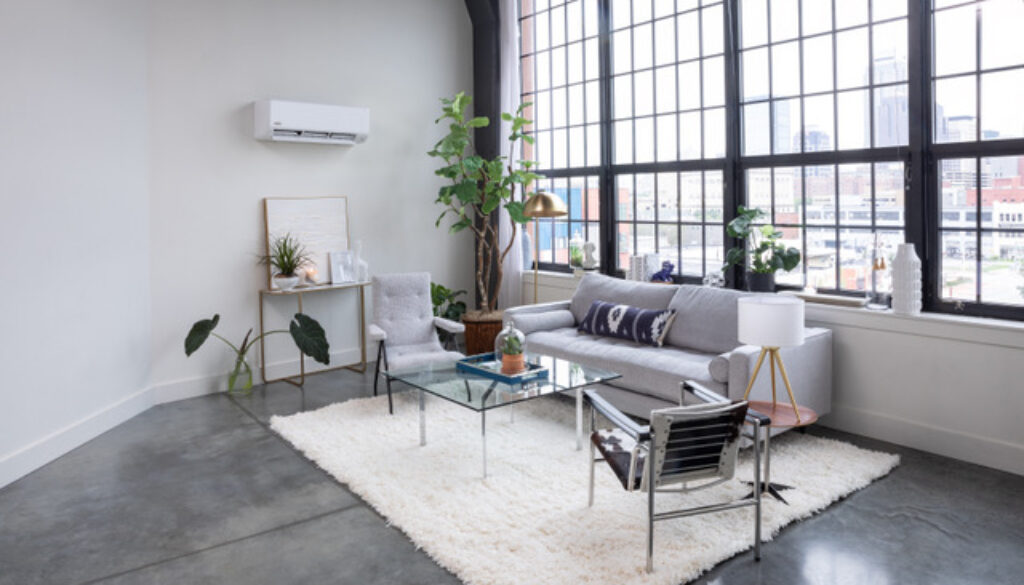Heat Pumps 101: Answering 8 Common Questions about Heat Pumps
Buying a heat pump or cooling system for your home, it turns out, is not like buying shoes at the Army and Navy shoe sale. While there seems to be a large variety of options out there – heat pump, mini-split, air-source heat pump –, getting the right solution for your home is more like a Cinderella Story.
As a homeowner myself, I had a few questions about the entire process. So, this week, I sat with R&B owner and Chief Estimator, Rob Blaksic to ask him some of the questions top-most in my mind. Not only is Rob a super knowledgeable guy, but he makes complex information easy to understand and by the time we were done, I felt like I had the right tools to make the right choice for my home – or rather, find the glass slipper!
Q: What’s the difference between a heat pump and an air conditioner?
From a cooling point of view, a heat pump and air conditioner are the same. Where they are different, is a heat pump can reverse the process of turning cool air into warm. So, every heat pump cools or at least can cool, but air conditioners only cool. I think this is why there are no grants for air conditioners – because you still need a way to heat your home and that way might be natural gas which won’t meet the goal of reducing the use of natural gas (hang on to that thought I’m going to come back to it).
Q: What are the heat pump grants for?
In general, the purpose of these grants seems to be to encourage homeowners to change the energy source for our in-home heating from natural gas to electricity. And not just any electric appliance, but heat pumps which are highly energy efficient.
Q. What’s the heat pump system used for?
A heat pump is not only a piece of equipment that we refer to that’s placed outside the home but it’s also a system. Outside is the condenser and inside is the evaporator coil. Plus, you’ll have your lines between the two, the fan, and finally the ducting or whatever is used to distribute the cold air.
A heat pump system can be used with a boiler system (a home that heats with water) this is called an air-to-water system. This is an application that is less common though since in BC, the sizing of the radiant loops and lines that carry the water tend not to be large enough to carry the cooled water throughout the home.
The difference between moving cold water and moving hot water is significant. Think of ketchup in a bottle; it’s thicker and harder to move. You can take the lid off, but it takes a great deal of force to actually get the ketchup out of the bottle. Yet if you put water in the same bottle, it just falls right out. What would it take for the ketchup to fall out? A much bigger opening!
It’s much more common for an air-to-air heat pump to be installed in a home. The heat pump can work with the home’s furnace and exiting ducting to route the cool air around the home.
Q. What is the mini-split system for then?
Also for heating and cooling, a ductless mini-split system is a setup where there’s a condenser on the outside of the home that does the business of exchanging heat for cool. From there, lines are routed through the walls to the inside of the home where there will be another unit – usually hanging high up on the wall about the size of a three-year-old child. In the hot months, the lovely cool air will drift out of that like a cool waterfall.
These are a good solution for homes without ducting that need supplemental cooling for only a portion of the home or a few rooms. Ironically the grants for mini-split systems are the highest available, up to $17,000. These are for applications where the existing system is completely replaced, and all natural gas heating is completely decommissioned.
But before you say “I’ll take the system please with the $17,000 worth of grants please!” Let’s talk about supplementary heat.
Q: Why would I need a furnace or any supplementary heat if the heat pump or mini-split system provides for both heating and cooling?
There are actually two reasons a home might need supplemental heat. Both can be summed up in one word – Capacity.
In the winter, as it gets colder outside, the heat pump will lose its ability to create heat. So even though you may start at (for example) 12000 BTU, that heating power will decrease with the outside temperature. Looking at the size chart for the unit, we (or rather, Rob) can see how cold it can become and still produce to its maximum. As the temperature passes that point the heat produced is diminished and eventually the system won’t produce enough heat to keep up with the demand inside the home.
Q: Why not just get a bigger heat pump with more BTU?
Exactly what I asked! Again, capacity. Ducting size limits the size of the system you can put in.
With this explanation, I was treated to a science lesson that was put into terms I could understand. Most homes without a/c have ducting that’s been sized with the idea of moving hot air around. They have not been built with the ducting necessary for moving a large amount of cooled air.
Cool air is denser and heavier. Heavier air is harder to move and thus pushing it through smaller spaces increases the difficulty. So, just like the ketchup, you need larger ducting to move the same amount of colder denser air than you do for heating. Yes, you can buy a larger unit, but unfortunately, if the amount of air you can move is too limited – the extra cost will be a waste of money. Instead does a calculation to know what the maximum airflow can be for the home, and then sizes the unit appropriately.
Q: Can’t you use more force to move the cooler air – like a fan?
Yes, you could, but moving air by force gets noisy, and pretty soon the volume of the fan is too high for the comfort of the home. The trick is to find the right balance. Sometimes that’s enough, but sometimes it’s not and then it becomes necessary to maintain or introduce some type of supplemental heat.
Q: What’s the newest thing on the market?
Innova units are the newest and coolest thing going right now. They’re an affordable solution that hangs on the wall and vent through the wall to the outdoors. These are about as close to a stand-alone or window air conditioner as you can get with professional-grade parts.
Innovas are a self-contained unit called a mono block. It doesn’t have an outdoor compressor, and it can run off the standard 115-volt circuit. Add to that that they’re quiet and installation is easy and you’ll begin to see why they’re so popular. They put out about 12,000 BTU which will cool approximately 600 square feet making it a great solution for a small apartment, or a single room.
Did That Answer Your Heat Pump Questions?
In conclusion, our very own R&B prince charming will come to your house armed with all these options available. Then, after some math, and some conversation as to what your goals and budgets are, and what grants are available to you, he will narrow it down and present you with a glass slipper – or two! But only what is going to work the best. If you have more heat pump questions, our team is here to help. Contact us today for more information, and to book a consultation.


